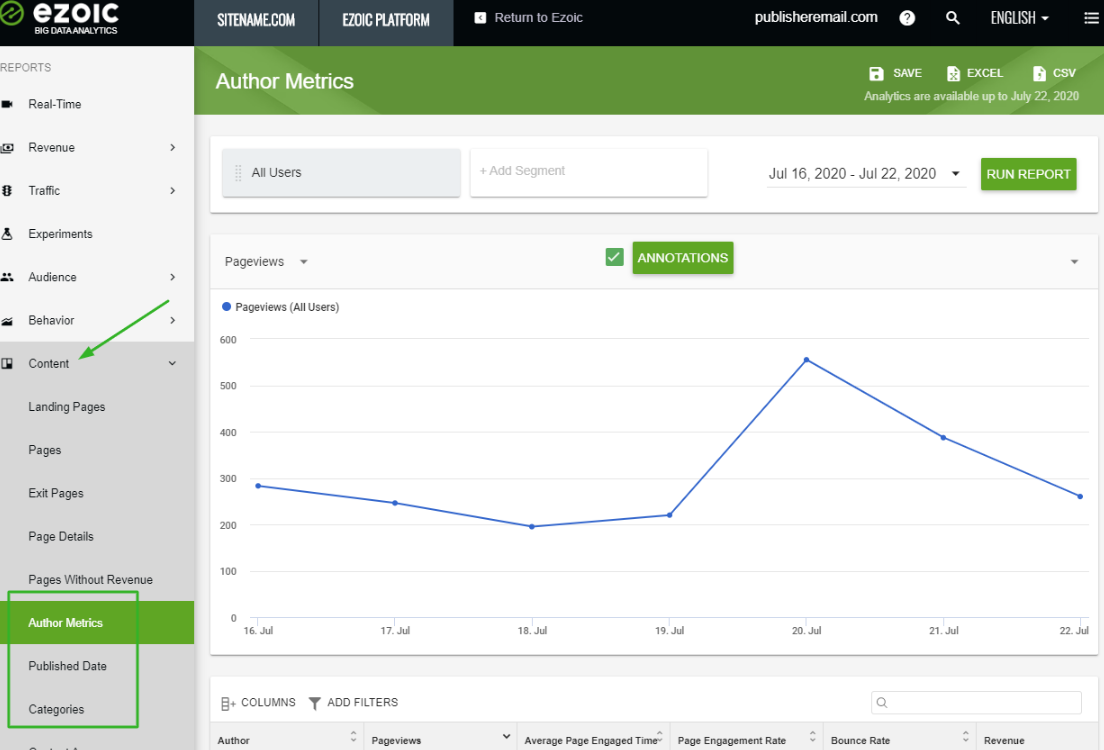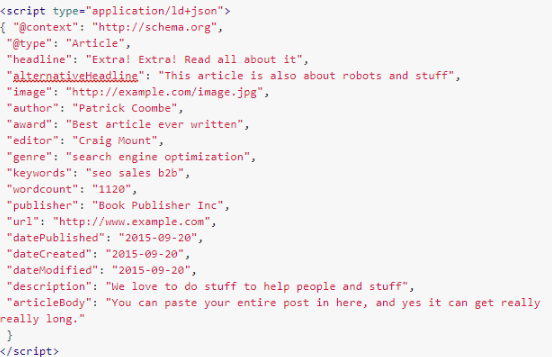Big Data Analytics allows you to gain unique insights into your content by analyzing various metrics based on Author Name, Published Date, Category, and Content Age. Some of the key metrics include Engagement Rate and Bounce Rate. To find these reports, log in to your Ezoic Dashboard and navigate to 'Analytics'. Once inside Big Data Analytics, go to the 'Content' tab where you'll find 'Author Metrics', 'Published Date', and 'Categories'.

Author Data Collection
Ezoic gathers author data primarily through JSON-LD, which is an industry standard.
JSON-LD tags help in structuring data in a way that can be easily read and understood by various platforms.
For instance, an Article ld+json script tag

or
a Blog Post ld+json script tag can be used to specify the author.

These tags may list the author as a string (e.g., "author": "Patrick Coombe") or provide an author object with attributes such as "name".

If JSON-LD is unavailable, other meta tags and HTML structures are utilized, including The Open Graph protocol.
Author meta tag:

Author Sailthru metatags (Personalization Engine Meta Tags):

The Author hyperlink rel="author" can indicate the author by pointing to a link with the author's name.

Reports can also be generated using usernames, although these can sometimes include full URLs.
Here is an example of a Profile username from Open Graph:

Published Date Data Collection
For gathering published date metadata, JSON-LD is also the primary method. If JSON-LD is not available, The Open Graph protocol is used. This protocol allows the use of meta tags to specify the published date of an article.
Examples include using Open Graph for article publish_time

Published date can be found using meta tag date, for example:

Or:

Here is an example from Sailthru for metatags: Personalization Engine Meta Tags

Category Data Collection
Category metadata can also be gathered using JSON-LD, with The Open Graph protocol serving as a secondary method. This involves using tags that specify the category of the article. Examples include the Open Graph article section tag

or specific meta tags designed to identify categories.

In summary, Big Data Analytics leverages standardized metadata formats like JSON-LD and The Open Graph protocol to collect and analyze data on authors, published dates, and categories, providing valuable insights into content performance.













